The two big favourites – Kasper Harlem Fosser (NOR) and Tove Alexandersson (SWE) – won the World Cup Long distance race in Idre Fjäll, Sweden. Both won with a big margin – Fosser by 4:04 ahead of Matthias Kyburz (SUI), while Alexandersson took the women’s race with a 3:12 margin over Simona Aebersold (SUI).
The course featured typical Nordic terrain with detailed contours, marsh areas, and mixed forest that required careful navigation. Quite a few mistakes were made by top runners – see the graphical analysis below for where some of the top runners lost time in the battle for the top placings.
Kasper Harlem Fosser won in 1:28:13, building his lead gradually through the course. The Norwegian was consistent through the technical sections and pulled away already from the start. Tove Alexandersson won in 1:29:18, taking the lead early and extending it throughout the race. The Swede was strong both technically and physically over the demanding course. Both Alexandersson and Fosser had company from other top runners along the way; Fosser caught up with second placed Matthias Kyburz at the 8th control, while the top three in the women’s class were mostly together from the 8th control.
Race analysis: Men
See below for a graphical split time analysis. Fosser was particularly strong on the longer legs, where his route choices and execution were better than his competitors.
Already to the second control he built up a big lead on everybody except Max Peter Bejmer (SWE) – but Bejmer did a huge mistake on the third control, and was out of the battle for top positions. Bejmer along with Emil Svensk were actually the only runners who were close to Fosser’s speed in the first half of the course. Nobody managed to keep the Norwegian’s speed towards the end, though.
See below for graphical split time analysis of the battle for second place.
Here you can see the battle between Fosser and Kyburz in “real time”.
And a GPS-analysis of some key legs below.
Race analysis: Women
Below is a graphical split time analysis of the battle for victory in the women’s class. Similar to Fosser, Alexandersson had a different speed than the rest of the field at the start of the course, building up a big lead on the long leg to the second control. The only ones managing to keep here speed where the ones she caught – in addition to Sara Hagström on the long leg.
Below you can see a “real-time” comparison of the Alexandersson-group, and how it was formed.
And a GPS-analysis of some key legs below.
Maps and GPS-tracking
GPS-tracking:
Map men:
Map women:
Results
Men
| 1 | Kasper Harlem Fosser | 1:28:13 | 5:26 | ||
| 2 | Matthias Kyburz | 1:32:17 | +4:04 | 5:41 | |
| 3 | Viktor Svensk | 1:33:12 | +4:59 | 5:44 | |
| 4 | Emil Svensk | 1:34:14 | +6:01 | 5:48 | |
| 5 | Martin Regborn | 1:34:16 | +6:03 | 5:48 | |
| 6 | Max Peter Bejmer | 1:34:40 | +6:27 | 5:50 | |
| 7 | Anton Johansson | 1:35:02 | +6:49 | 5:51 | |
| 8 | Lukas Liland | 1:36:34 | +8:21 | 5:57 | |
| 9 | Jonas Egger | 1:37:23 | +9:10 | 6:00 | |
| 10 | Quentin Moulet | 1:38:18 | +10:05 | 6:03 | |
| 11 | Simon Imark | 1:38:27 | +10:14 | 6:04 | |
| 12 | Fabian Aebersold | 1:38:33 | +10:20 | 6:04 | |
| 13 | Gustav Bergman | 1:39:28 | +11:15 | 6:08 | |
| 14 | Simon Hector | 1:39:35 | +11:22 | 6:08 | |
| 15 | Isak Jonsson | 1:40:00 | +11:47 | 6:10 | |
| 16 | Olli Ojanaho | 1:40:32 | +12:19 | 6:12 | |
| 17 | Martin Hubmann | 1:40:34 | +12:21 | 6:12 | |
| 18 | Tuomas Heikkila | 1:40:37 | +12:24 | 6:12 | |
| 18 | Aaro Aho | 1:40:37 | +12:24 | 6:12 | |
| 20 | Daniel Hubmann | 1:42:31 | +14:18 | 6:19 |
Women
| 1 | Tove Alexandersson | 1:29:18 | 6:41 | ||
| 2 | Simona Aebersold | 1:32:30 | +3:12 | 6:55 | |
| 3 | Andrine Benjaminsen | 1:35:30 | +6:12 | 7:08 | |
| 4 | Sara Hagstrom | 1:36:57 | +7:39 | 7:15 | |
| 5 | Natalia Gemperle | 1:38:46 | +9:28 | 7:23 | |
| 6 | Victoria Haestad Bjornstad | 1:39:10 | +9:52 | 7:25 | |
| 7 | Johanna Ridefelt | 1:39:57 | +10:39 | 7:28 | |
| 8 | Amy Nymalm | 1:41:45 | +12:27 | 7:36 | |
| 9 | Ida Haapala | 1:42:29 | +13:11 | 7:40 | |
| 10 | Ingrid Lundanes | 1:42:51 | +13:33 | 7:41 | |
| 11 | Lotta Karhola | 1:45:14 | +15:56 | 7:52 | |
| 11 | Ane Dyrkorn | 1:45:14 | +15:56 | 7:52 | |
| 13 | Elisa Mattila | 1:46:19 | +17:01 | 7:57 | |
| 14 | Denisa Kralova | 1:47:43 | +18:25 | 8:03 | |
| 15 | Paula Gross | 1:49:05 | +19:47 | 8:09 | |
| 16 | Cecile Calandry | 1:49:31 | +20:13 | 8:11 | |
| 17 | Inka Nurminen | 1:49:41 | +20:23 | 8:12 | |
| 18 | Andrea Svensson | 1:50:02 | +20:44 | 8:14 | |
| 19 | Alina Niggli | 1:50:36 | +21:18 | 8:16 | |
| 20 | Pia Young Vik | 1:50:55 | +21:37 | 8:18 |
 World of O News
World of O News

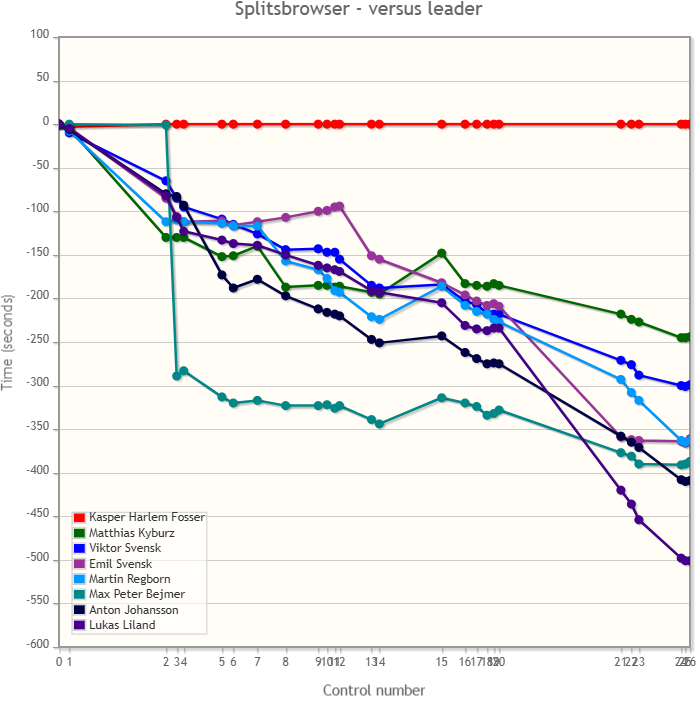
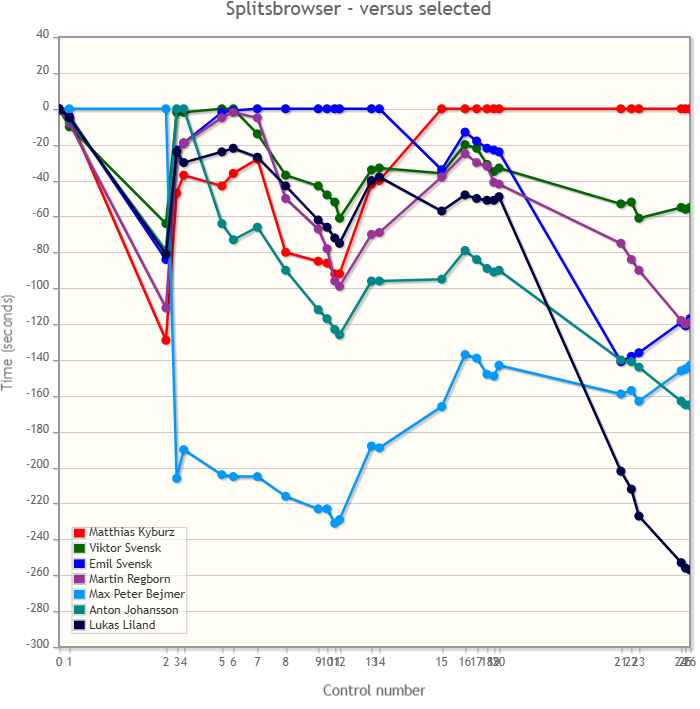

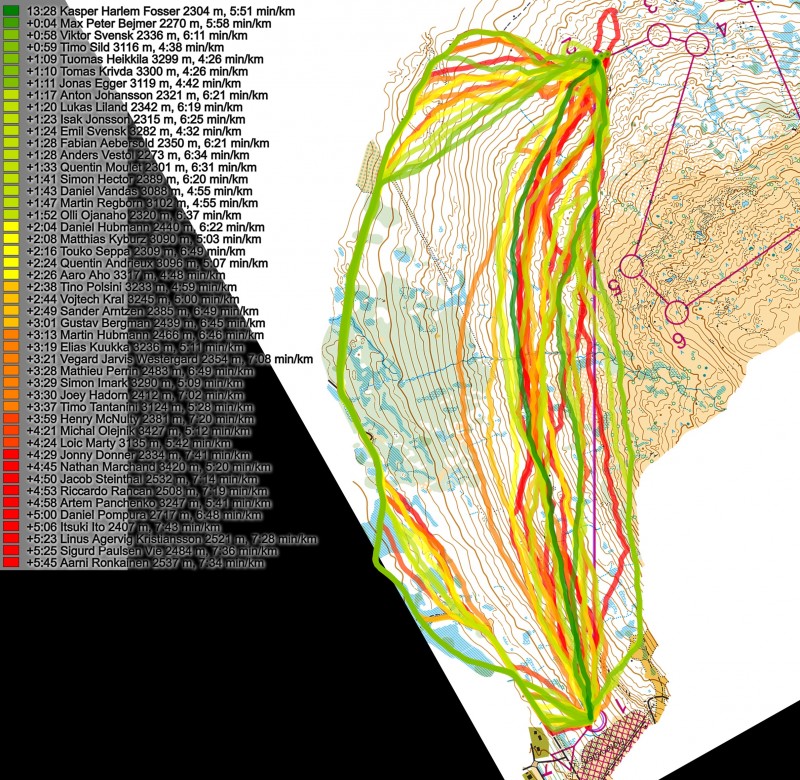
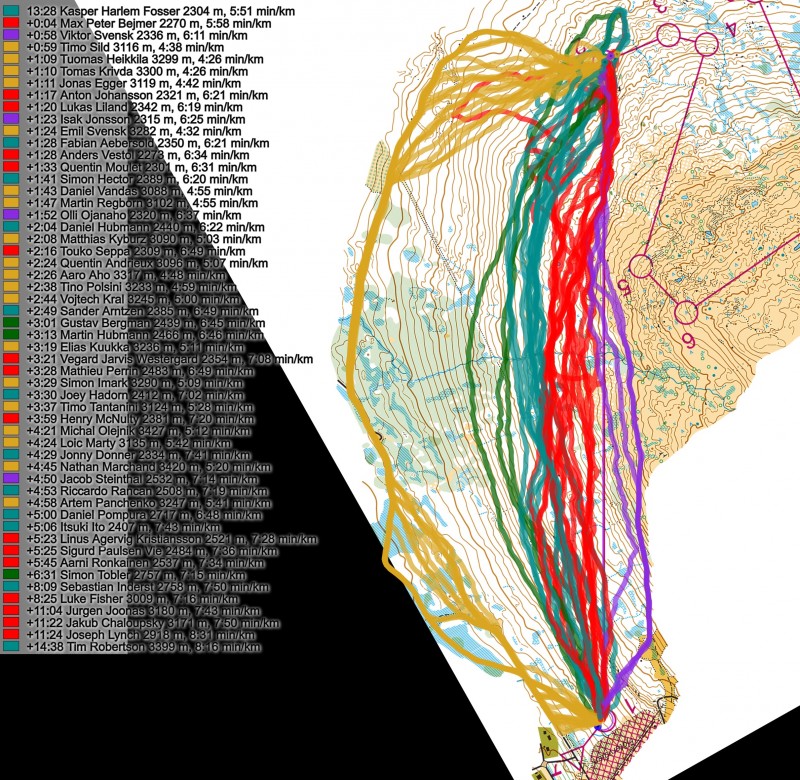
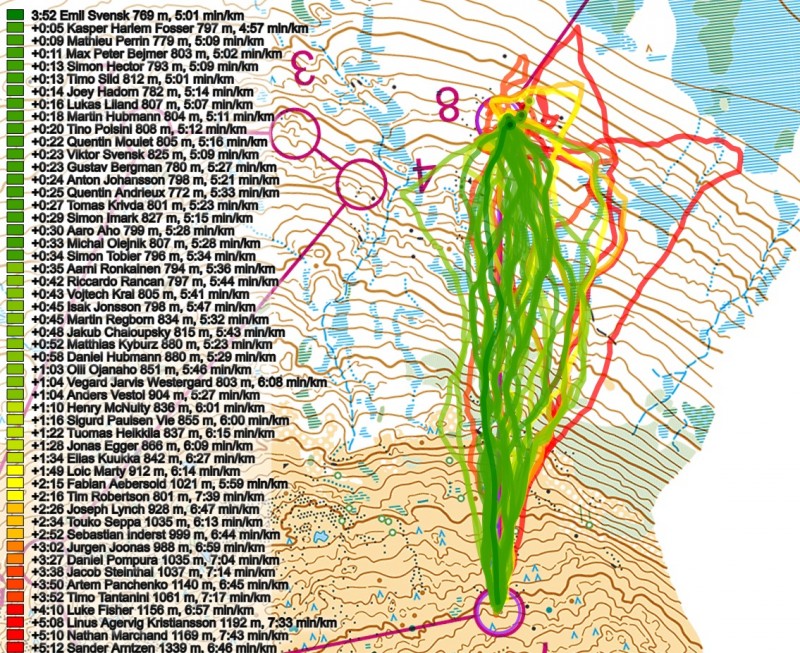
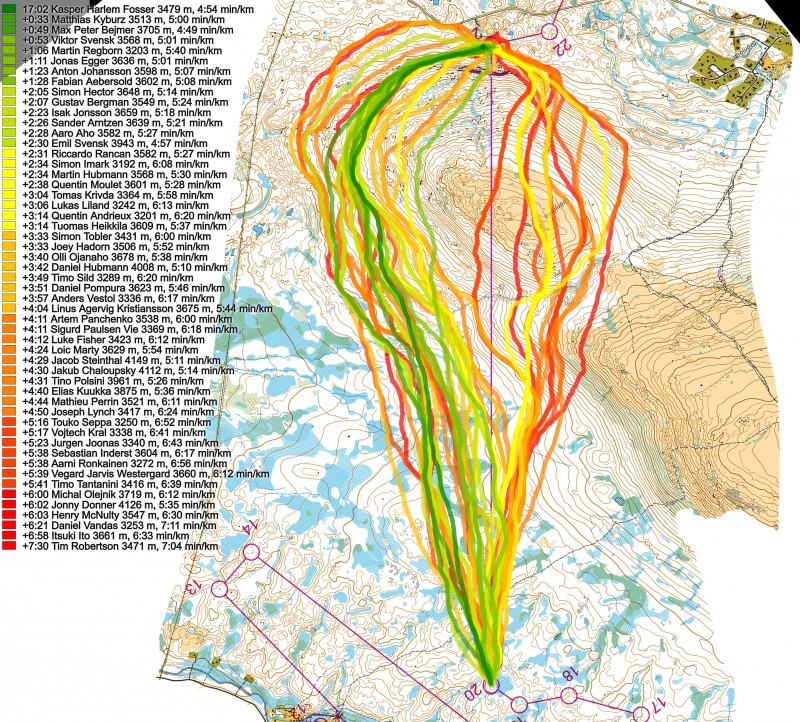
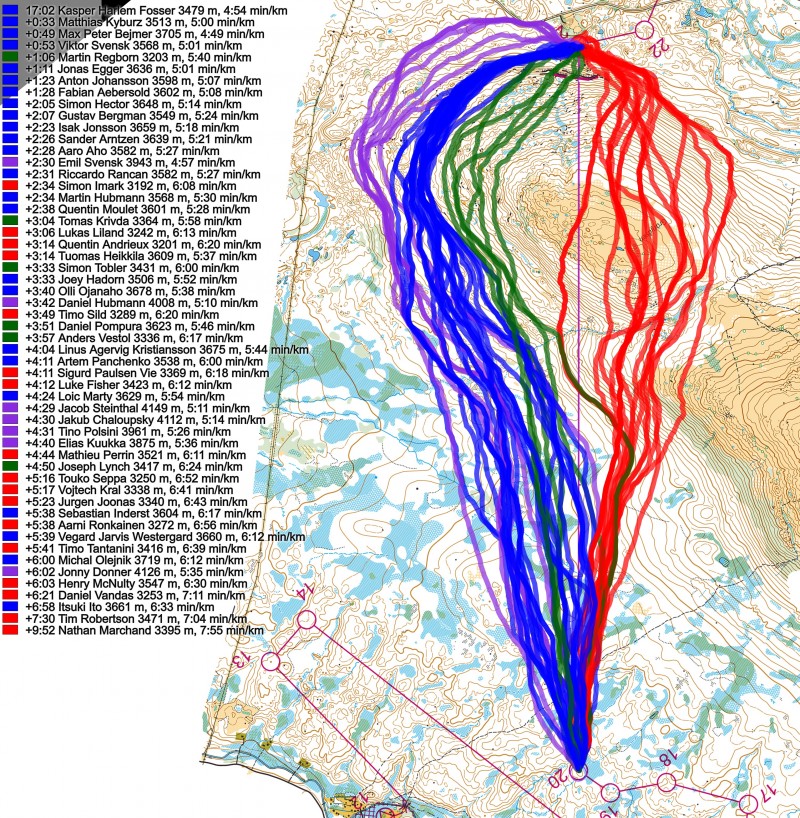

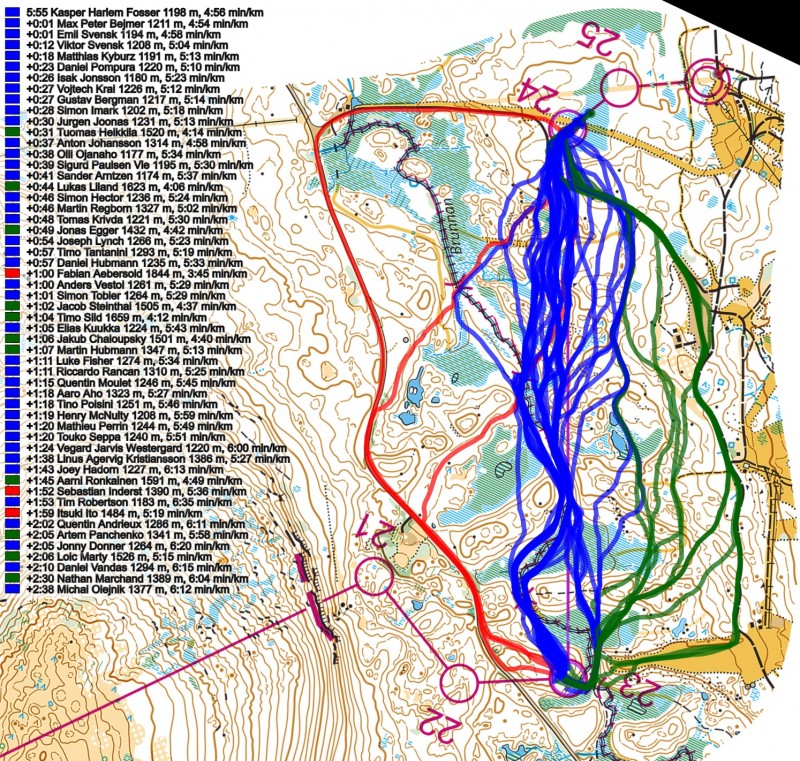
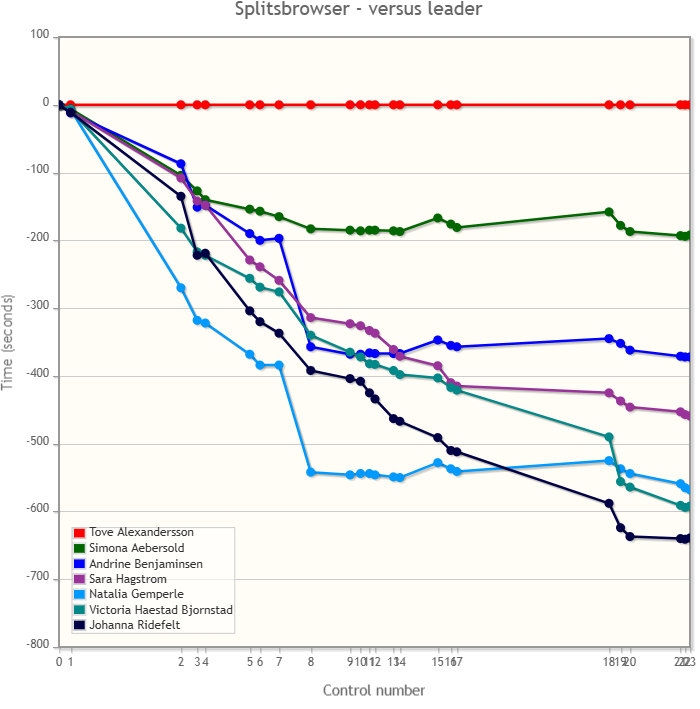
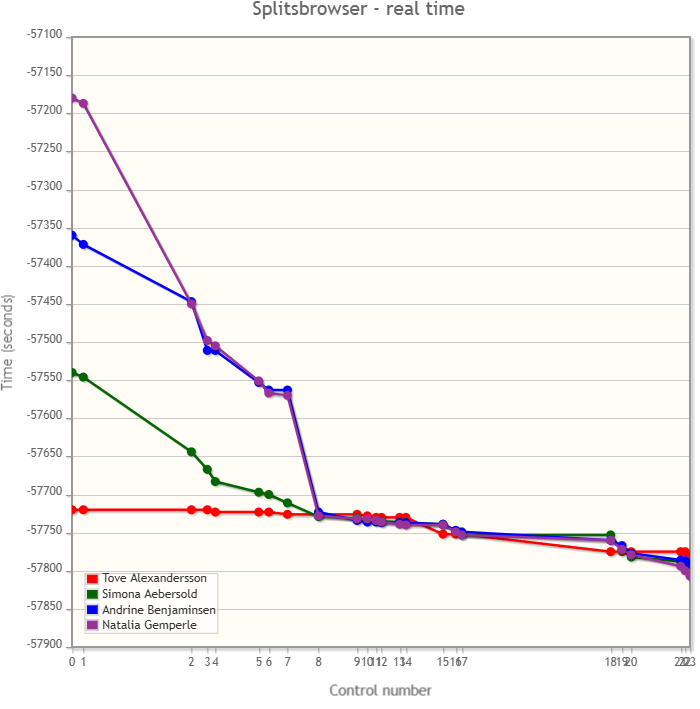

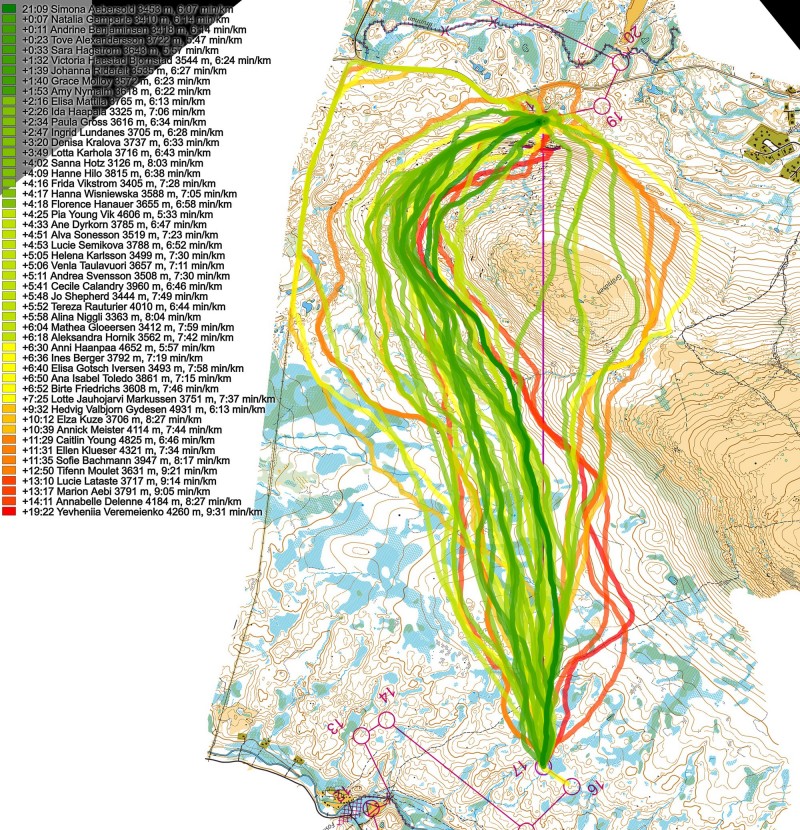
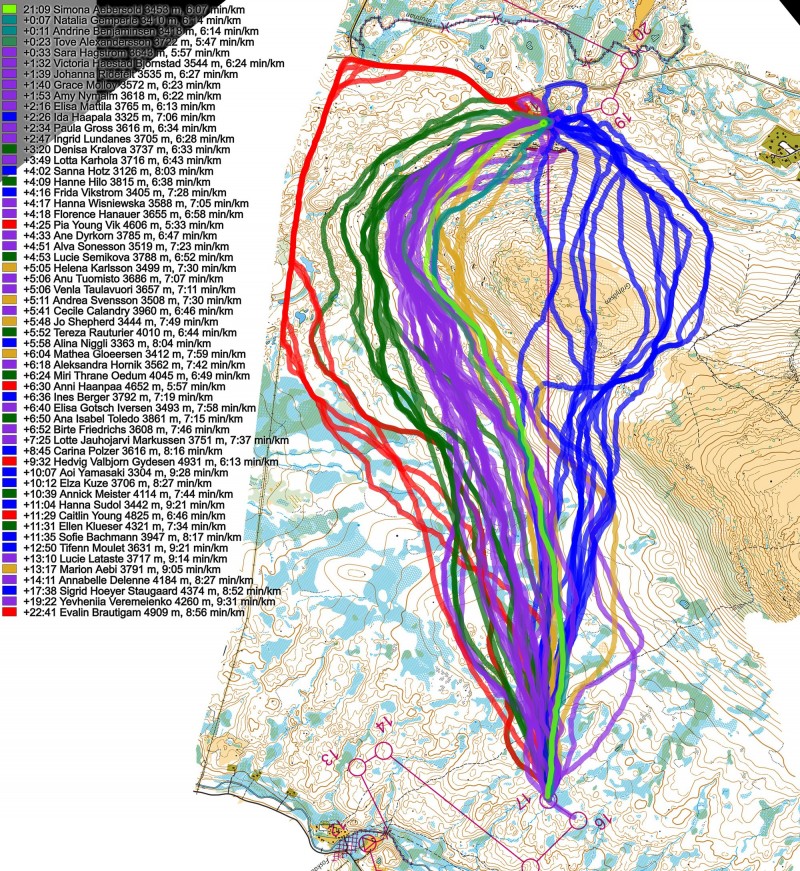
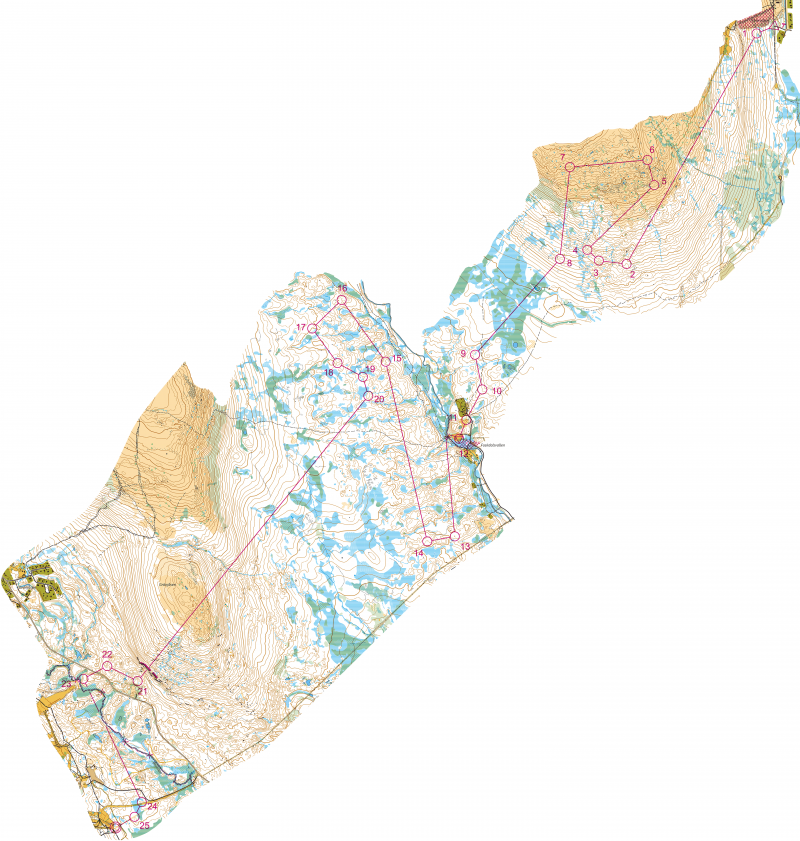






Long distance race is meant to provide MANY routechoice options and several long legs. I would argue that instead this was a race of running speed and certain degree of luck in a diffuse terrain. You could see numerous instances where competitors would miss control by a few meters in a clear forest where controls were put on micro features. Routechoices? The only real routechoice was just before the finish – along the river. The rest? Nah… Ok – may be to 2nd control – up the hill, on the slope or from below. AND THAT’S IT! The other long leg – not really a routechoice. Those going over the hilltop clearly were going to lose time. Definetly a sub-par WCup course for me.
For the routechoices, I’d argue the exact opposite. 1-2 was a classic routechoice leg, as they should be, where the more technical option appears to be slightly faster, but only if executed perfectly. And for the leg across the hill, those going over the hill clearly did not think they were going to lose time if they chose that option, right? Plus, on both legs there were “micro” choices: where do you turn off the path, where do you run on the slope (attack 2 from above, where there are more features on the map, like Bejmer, or save some climb, like Fosser), and how far around the hill do you go? That’s more interesting than just having two or three discrete choices.
The strangest thing is the map for leg 1 – 2 as some of the best splits were run by going briefly off the map
Always consider that the map you see on GPS Tracking, or other places in the Internet, might not exactly be the map the runners did run with.
I am really impressed with Victor Svensk who ran the course mostly alone. Some time with Martin Hubmann but not one of the really top guys.
Often these days 2nd and 3rd place in long races seems to be decided by start order. Whoever starts just before the winner (usually Fosser and Alexandersson) comes 2nd and, in the women, whoever starts just before that comes 3rd. Long races need to be seriously gaffled (not just 1 or 2km which is unlikely to separate top runners) to reduce the possibility of getting a podium place by being caught by the winner, especially in high visibility terrain where there is not much route choice. Perhaps also have mass starts, also with gaffling, so at least its the same for everyone.
Yes, it happens so often that the last three run together then get the 3 medals. For Fosser a tactical choice to start extremely fast and reach this situation where he can just control the race later ?
Maybe the IOF should review those rules.